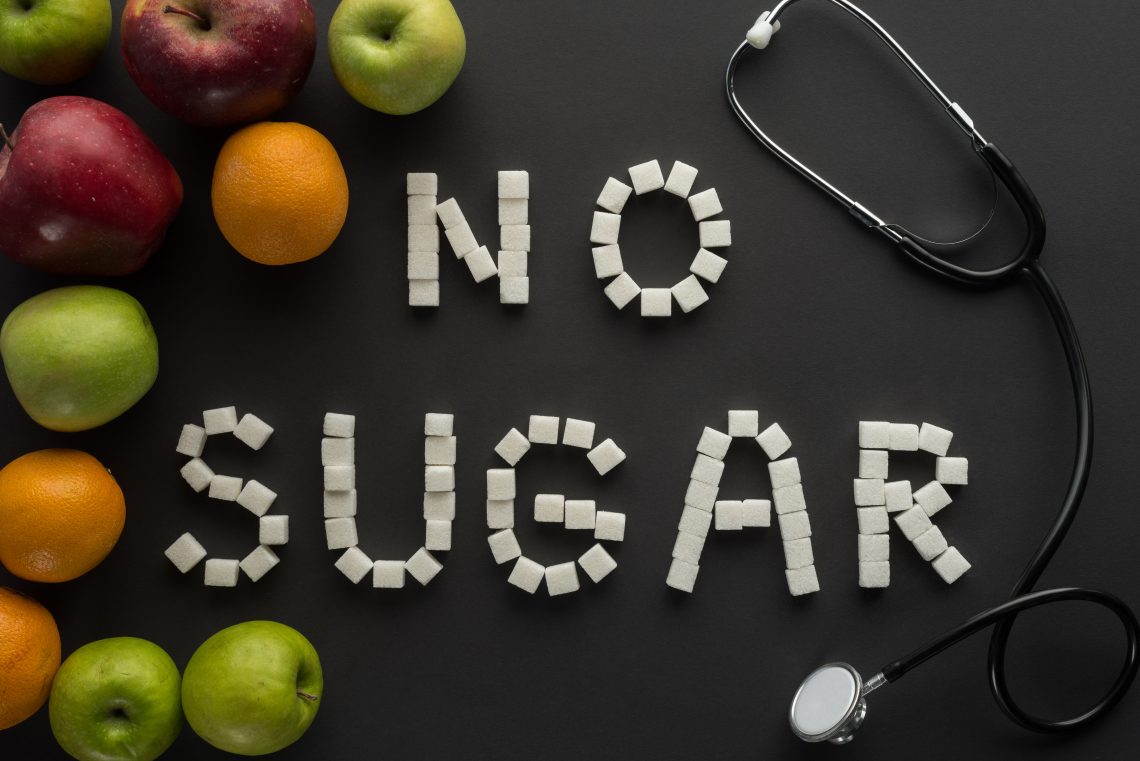Sugar, that sweet culprit found in many of our favourite treats, has a knack for sneaking into our diets in ways we might not immediately recognise. As delicious as it is, excessive consumption of sugar is linked to numerous health problems, including obesity, type 2 diabetes, and heart disease. Reducing sugar intake is essential, but breaking free from its hold can be challenging. Here’s a step-by-step guide to help you liberate yourself from sugar addiction.
The Effects of Excessive Sugar Intake
Before you can effectively combat sugar addiction, it’s crucial to understand why it’s a problem. Sugar is a simple carbohydrate that provides a quick source of energy, but it lacks nutritional value—offering what is often called “empty calories.” Regular overconsumption can lead to weight gain and an increased risk of serious health issues like diabetes and heart disease. Moreover, sugar has a high glycemic index, which causes rapid spikes in blood sugar levels followed by a crash, fuelling a cycle of cravings and consumption.
Initiate a Sugar Detox
The first step in breaking the cycle is a sugar detox. This doesn’t just involve cutting out the obvious sweets; it’s about scrutinising your diet to reduce all sources of added sugars. Begin by eliminating sugary beverages, sweets, and processed foods from your diet. Instead, focus on whole foods like vegetables, fruits, whole grains, and proteins. The benefits of a sugar detox can be profound, leading not only to decreased cravings but also to better overall health, enhanced energy levels, and even improved mental clarity.
Read Labels Carefully
Sugar lurks in many products where you might not expect it—from bread and sauces to soups and salad dressings. Become a vigilant label reader. Look out for anything ending in ‘-ose’ (like glucose, fructose, and sucrose), which are indicators of sugar. Also, be aware of other common names for sugar such as high fructose corn syrup, cane sugar, and maltose. Opt for products with natural ingredients and without added sugars. Making this a habit can dramatically cut down your sugar intake without having to make drastic dietary changes.
Find Healthier Alternatives
Curbing your sugar addiction doesn’t mean you can never enjoy something sweet. Replace high-sugar items with healthier alternatives. For instance, swap sugary snacks for fruits, nuts, or yoghurt. Use spices like cinnamon, nutmeg, or vanilla to add flavour without sweetness. For baking, consider substitutes like apple sauce or ripe bananas to reduce the amount of added sugar while still satisfying your sweet tooth.
Emotional Eating: Tackle the Root Cause
Often, our cravings for sugar are more psychological than physiological. Many turn to sweet foods for comfort or as a way to cope with stress. Addressing the emotional triggers that lead to sugar consumption can be pivotal. Techniques such as mindfulness, meditation, and even speaking with a therapist can help you understand and manage these triggers more effectively, reducing your reliance on sugar for emotional well-being.
Building Sustainable Habits
Breaking a sugar addiction is not about short-term fixes; it’s about creating sustainable health habits. Gradually reducing sugar intake, setting realistic goals, and finding support through friends, family, or online communities can all contribute to long-term success. Remember, occasional setbacks are normal, but perseverance is key.

Photo by on Pexels
Incorporate Physical Activity
Physical activity plays a significant role in breaking the cycle of sugar addiction. Regular exercise can help stabilise blood sugar levels, reduce stress, and boost your mood, all of which can help curb sugar cravings. Aim for at least 30 minutes of moderate exercise most days of the week. This could be anything from brisk walking and cycling to yoga or swimming. The endorphins released during physical activity can serve as a natural mood enhancer, reducing the temptation to reach for sugary snacks for a quick emotional boost.
Plan Your Meals and Snacks
Having a well-thought-out meal and snack plan can prevent you from reaching for sugary foods out of convenience or hunger. Start your day with a balanced breakfast that includes protein, healthy fats, and whole grains to keep your energy levels steady. For lunch and dinner, focus on incorporating plenty of vegetables, lean proteins, and whole grains. Keep healthy snacks like nuts, seeds, fruits, and vegetables readily available. Planning ahead not only ensures you have nutritious options on hand but also helps you avoid the trap of impulsive eating driven by sugar cravings.
Stay Hydrated
Dehydration is often mistaken for hunger or cravings, including those for sugary foods. Ensuring you stay well-hydrated throughout the day can help mitigate these false hunger signals. Aim to drink at least 8 glasses of water daily, but remember that individual needs may vary based on factors like activity level and climate. If plain water doesn’t appeal to you, try infusing it with slices of citrus fruits, berries, or herbs like mint for a refreshing twist. Staying hydrated can help you feel more satiated and less likely to reach for sugary snacks.
Sweet Freedom Awaits
Embarking on a journey to break your sugar addiction is no small feat, but with dedication and the right strategies, achieving freedom from sugar is entirely possible. By understanding the impacts of sugar on your health, taking concrete steps to reduce intake, and addressing the emotional aspects of eating, you can make substantial progress towards a healthier, sugar-free lifestyle. The road to recovery might be challenging, but the sweet taste of freedom is worth every effort.
Read more health articles at ClichéMag.com
Images provided by Deposit Photos, BingAI, Adobe Stock, Unsplash, Pexels, Pixabay & Creative Commons




